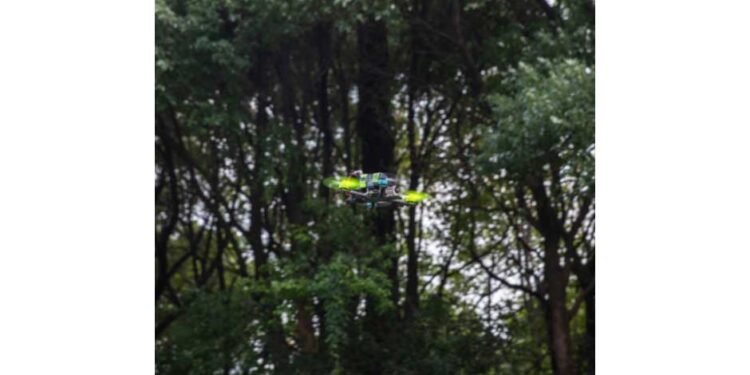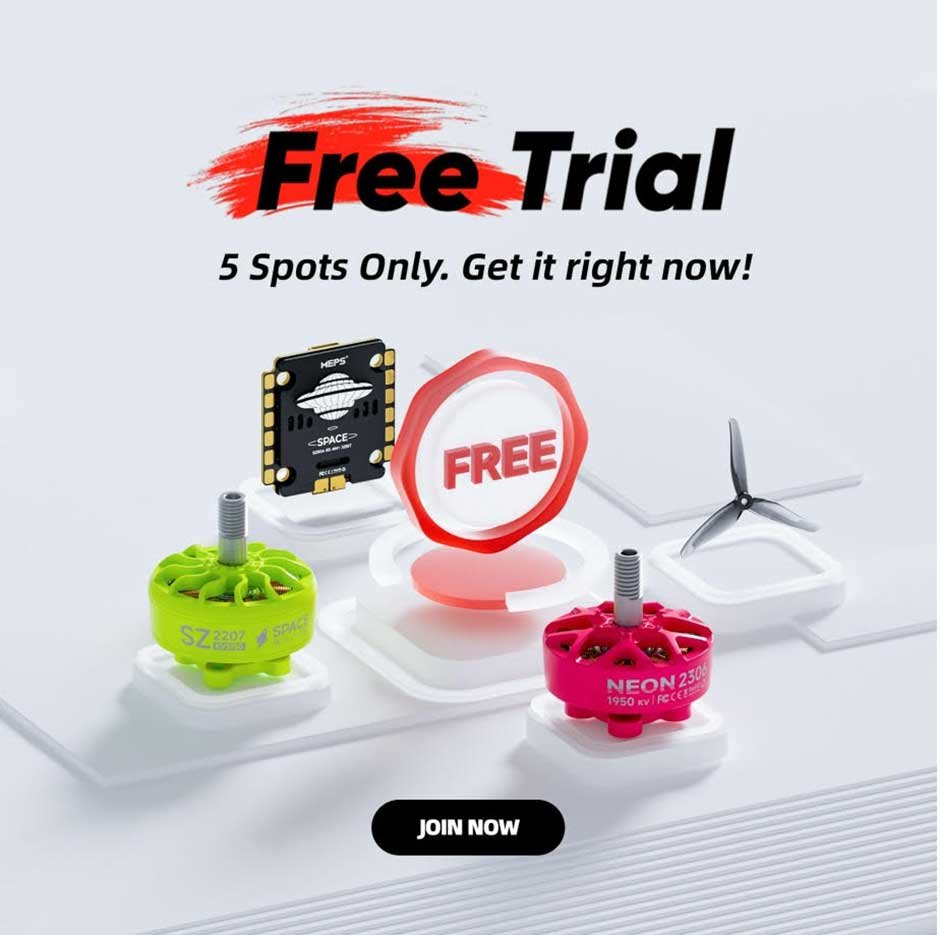An FPV drone offers a unique flying experience by allowing you to see exactly what the drone sees in real time. Unlike regular drones, FPV drones give you a first-person view, making flying feel like you’re inside the drone. Whether you’re into racing, freestyle flying, or capturing stunning aerial shots, FPV drones provide an exciting and immersive way to explore the skies.
In this guide, we’ll cover everything you need to know to get started with FPV drones, from what they are to how you can begin flying.
1. What is an FPV Drone
An FPV drone, short for First Person View drone, is a unique type of drone designed to let you see the world as if you’re flying inside it. Unlike traditional drones that are operated by line of sight or through a screen on a controller, FPV drones provide a live video feed directly to FPV goggles or monitors. This gives pilots an immersive, cockpit-like experience, allowing them to control the drone with a real-time view of its surroundings.
FPV drones are especially popular in activities like drone racing, where speed and precision are key, and in creative fields like aerial photography and videography, where capturing dynamic footage from a first-person perspective adds a cinematic edge. Pilots enjoy the thrill and unmatched control FPV drones offer, making them a favorite for both hobbyists and professionals.
2. What Does FPV Mean in Drones
In the world of drones, FPV stands for “First Person View.” This technology allows pilots to see exactly what their drone sees in real time, creating an immersive flying experience. Using a camera mounted on the drone, the video feed is transmitted to FPV goggles, a monitor, or even a smartphone, putting you in the virtual cockpit of your drone.
The FPV drone experience opens up new possibilities for exploration and creativity. Instead of just watching your drone from the ground, you can soar above treetops, navigate narrow spaces, or capture breathtaking views from unique angles. While many drones on the market today have cameras, true FPV drones are built specifically for this real-time flying perspective, often featuring low-latency transmission and high-speed performance.
Whether you’re into racing, aerial photography, or just enjoying the thrill of flying, FPV drones offer an unparalleled way to explore the skies.
3. Where to Buy FPV Drones?
Finding the right place to buy an FPV drone is essential to ensure you get quality equipment and reliable support. Whether you’re looking for a ready-to-fly setup or individual components for a custom build, there are several great options to explore.
MEPSKING is a trusted online platform specializing in parts and kits for FPV drone. Known for its competitive prices and wide selection, MEPSKING offers everything from high-performance motors to complete FPV drone kits. Beginners and experienced pilots alike can find what they need, and the platform frequently features discounts and promotions, making it a great choice for budget-conscious buyers.
3.1 Discover MEPSKING: Your Premier One-Stop Shop for FPV Drone
MEPSKING is a leading online platform dedicated to FPV drone enthusiasts. As a trusted industry leader, MEPSKING bring you an extensive range of high-quality FPV drones and accessories, making it easier than ever to find everything you need for your next flight adventure.
At MEPSKING, we’ve partnered with top-tier brands like DJI, T-MOTOR, iFlight, BETAFPV, RunCam, CaddxFPV, RADIOMASTER, SpeedyBee and more to provide a wide selection of FPV essentials. From motors, ESCs, frames, and cameras to FPV goggles, controllers, and beyond, we’ve got you covered.
Plus, our exciting ongoing events make shopping even more rewarding:
- Spin the Lucky Wheel – Win exclusive prizes and discounts.
- Free Product Trials – Test our products at no cost.
- Social Media Events – Engage with us on our official channels for a chance to win.
3.2 Why Choose MEPSKING: Official Quality Assurance, More Affordable Prices
A Complete Product Range: We offer both variety and quality.
- All FPV Essentials in One Place: Find everything you need, from motors, ESCs, and flight controllers to goggles, antennas, and video transmitters.
- Top-Quality Selection: Partnering with leading brands, we curate the most popular and reliable products on the market. Every product undergoes professional testing by our team to ensure quality.
Dual Quality Assurance
- Brand Warranty: Enjoy coverage directly from the manufacturers.
- MEPSKING Support: Our professional after-sales service includes a two-year warranty on all orders, ensuring any quality issues are promptly addressed.
Unbeatable Prices
- Official Discounts: Take advantage of brand promotions.
- Exclusive MEPSKING Offers: Stack additional platform discounts on top of official deals for maximum savings.
Faster Delivery
- We prioritize getting your products to you quickly so you can spend less time waiting and more time flying.
3.3 Don‘t Miss Out on Free Trail at MEPSKING!
From the 16th to the 21st of every month, MEPSKING offers an exclusive Free Trial Program featuring different products each time. From motors and ESCs to flight controllers and more, you’ll have the chance to test premium FPV gear for free. Don’t wait—explore this month’s lineup and take your FPV experience to the next level!
4. Uses of FPV Drones
FPV drones are known for their ability to deliver an adrenaline-pumping experience and their versatile applications. While traditional drones are often used for simple aerial tasks, FPV drones unlock a more dynamic world of possibilities. Whether you’re into thrilling speed competitions, creative acrobatics, or capturing cinematic visuals, FPV drones are designed to meet your needs.
4.1 FPV Drone Racing
Racing is one of the most popular uses for FPV drones, attracting enthusiasts who crave speed and precision. These drones are engineered to be lightweight, fast, and highly responsive, making them perfect for navigating tight courses and sharp turns. Drone racing often involves competitive events where pilots race head-to-head, pushing their skills and drones to the limit. With an FPV headset, you can feel like you’re inside the cockpit, zipping through obstacles at breakneck speeds.
4.2 Freestyle Flying
For those who love creativity and freedom, freestyle FPV flying is the ultimate expression of skill. This activity focuses on performing aerial tricks, stunts, and maneuvers, like flips, rolls, and spins, in open spaces or urban environments. Freestyle FPV drones are built to be durable and powerful, ensuring they can handle complex moves while staying stable in the air. Pilots often use freestyle flying to challenge themselves or create impressive footage showcasing their skills.
4.3 Aerial Photography and Cinematography
FPV drones are also transforming how aerial footage is captured. Unlike traditional drones, which focus on steady and controlled shots, FPV drones provide dynamic, sweeping angles that create a sense of motion and excitement. These drones are particularly popular in film production, where they’re used to capture action-packed scenes or breathtaking views. Equipped with high-quality cameras, FPV drones make it easy to record stunning footage that immerses viewers in the moment.
No matter your interest—racing, freestyle, or filmmaking—FPV drones offer a unique way to explore the skies and push the limits of what’s possible.
5. What Equipment Do You Need to Become a FPV Drone Pilot?
Getting started with FPV drones requires the right equipment, and your needs will depend on how you choose to approach flying. Whether you’re practicing on a simulator, buying a ready-to-fly (RTF) drone, or building your own, here’s what you’ll need:
5.1 Practice with a Simulator
If you’re new to FPV drones, a simulator is a great way to learn without risking a crash. To use a simulator, you’ll need:
- A High-Performance Computer: Ensure your computer has a decent graphics card and enough power to handle FPV drone simulation software smoothly.
- An FPV Remote Controller: This connects to your computer and mimics the controls of a real drone, helping you build muscle memory.
- Drone Flight Simulator Software: Popular options include Liftoff, Velocidrone, and DRL Simulator, which offer realistic flying experiences.
5.2 FPV Drone Kits
For beginners who want a hassle-free option, purchasing an RTF FPV drone is the way to go. RTF drones come pre-assembled and typically include:
- The Drone: Fully built and ready to fly out of the box.
- A Transmitter: The remote control used to operate the drone.
- FPV Goggles or Monitor: For real-time video feed from the drone.
- Batteries and Charger: To keep your drone powered.
RTF drones save time and are ideal for pilots who want to jump straight into flying without worrying about assembly.
5.3 Building FPV Drone
For those who love customization and hands-on projects, building an FPV drone offers maximum flexibility. Here’s what you’ll need:
- Drone Parts: Includes a frame, motors, propellers, electronic speed controllers (ESCs), flight controller, camera, and video transmitter.
- FPV Goggles or Monitor: To view the live feed from your drone’s camera.
- Tools for Assembly: Essential tools include a soldering iron, screwdrivers, and wire cutters.
- Battery and Charger: To power your custom-built drone.
Building your own FPV drone requires more effort but gives you full control over the design and performance.
Each of these paths has its own benefits, so choose the one that matches your goals and skill level. Whether you’re practicing in a simulator, flying an RTF drone, or crafting your own custom quad, FPV drones are your gateway to an exciting world of aerial adventure.
5. How to Fly a FPV Drone
Learning to fly an FPV drone can be challenging but also incredibly rewarding. For beginners, the process involves gradual steps to build confidence and skill while minimizing costly mistakes. Here’s a guide to help you get started:
5.1 Start with a Simulator
The first step in learning to fly an FPV drone is practicing in a simulator. Simulators like Liftoff, Velocidrone, or DRL Simulator allow you to experience realistic flight controls without risking damage to a real drone.
5.2 Fly a Small Drone
Once you’re comfortable with a simulator, move on to a small, beginner-friendly drone. Compact models like the Emax Tinyhawk or other 1S “Whoop”-style drones are ideal for new pilots. These drones are lightweight, durable, and less likely to cause damage in a crash.
Flying a small drone will help you transition your simulator skills to the real world and get accustomed to handling an FPV drone in various environments.
5.3 Progress to Larger Drones
After gaining experience with smaller drones, you can move up to a 5-inch freestyle FPV drone. These drones are larger, faster, and more powerful, making them perfect for freestyle flying or advanced maneuvers.
5.4 Safety and Regulations
Flying an FPV drone comes with responsibilities. Always follow safety guidelines and regulations to ensure a safe and legal experience:
- Stay in Sight: Keep your drone within visual line of sight (or have a spotter if using goggles).
- Avoid Crowded Areas: Never fly near people, buildings, or sensitive locations like airports.
- Check Local Laws: In the U.S., register your drone with the FAA and adhere to regulations, including no-fly zones and altitude limits.
With patience, practice, and the right equipment, you can master the art of flying an FPV drone and unlock an exciting new world of aerial adventure.













